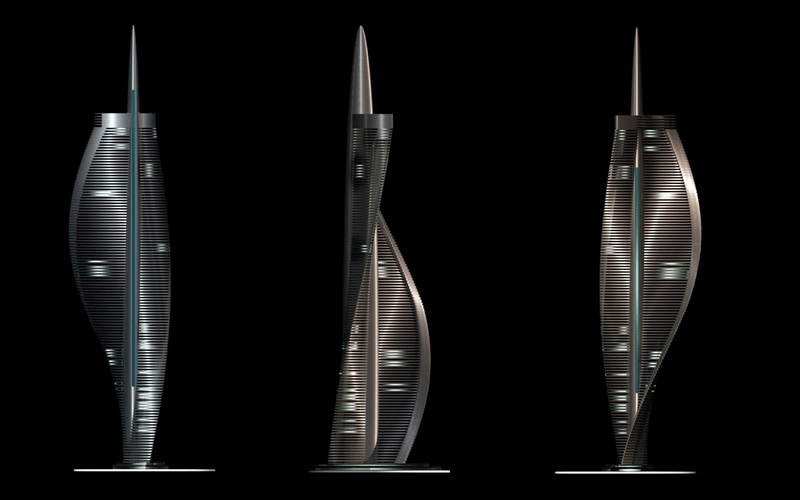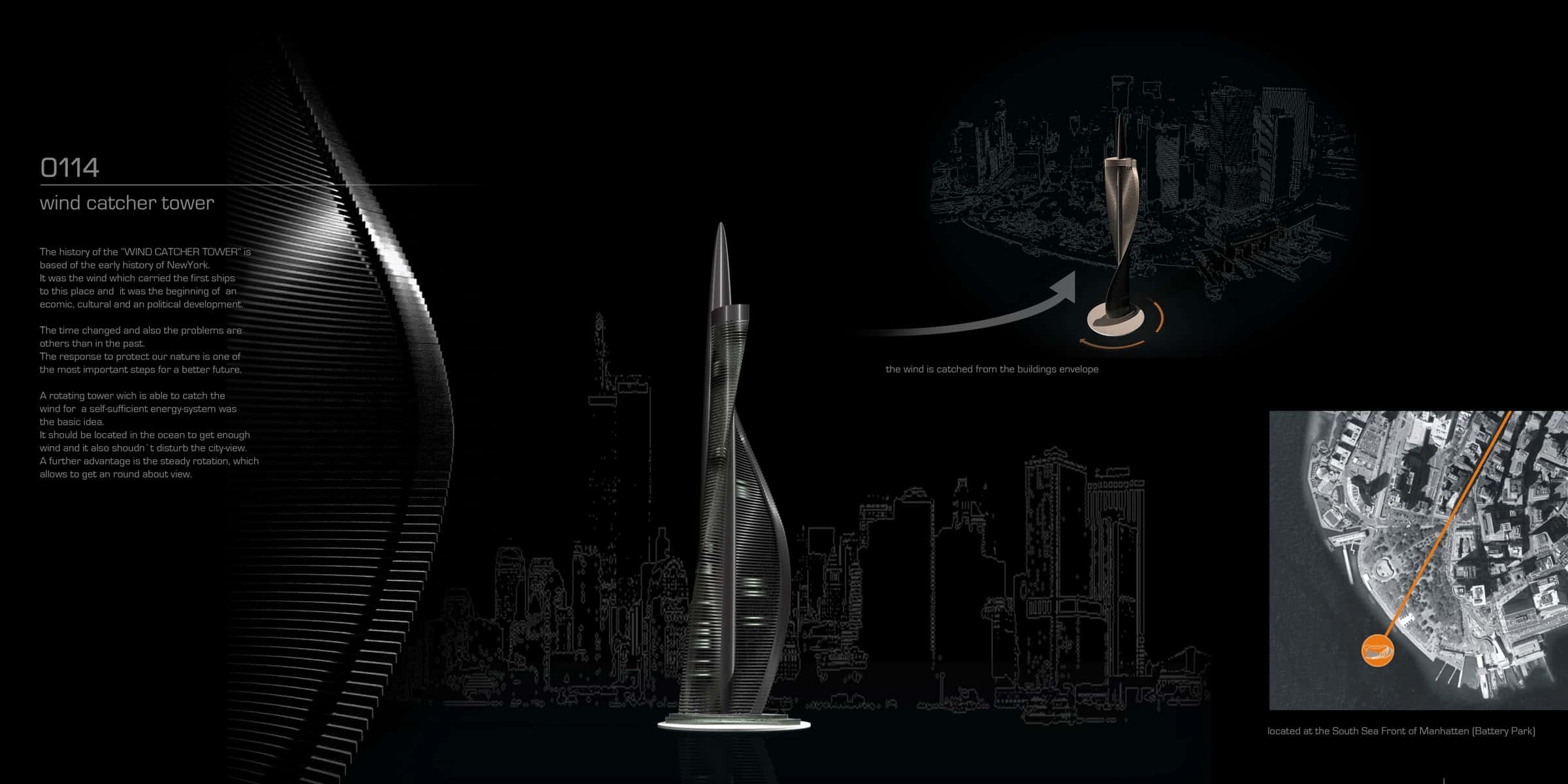Special Mention
2008 Skyscraper Competition
Tassilo Hager
Germany

The beginning of the 17th Century was the advent for the first trade routes. It was because of its great geographical position, that New York grew fast. After the Erie Canal was finished in 1825, it opened vast areas of New York to commerce and settlement. It was the wind which carried the first ships to this place and it was the beginning of its financial, cultural, and political development. Sailing ships were able to transfer trade goods via the Atlantic to Manhattan, and about the Hudson River to the vast areas of New York. The early historical background of New York is the main idea of this project. To combine the early seafaring with necessary methods to save energy is an important element. It should be a self-sufficient tower, constructed with light metal. The buildings’ envelope should be able to catch the wind. A symbol of the early history of New York, which represents its energy-conscious future.
The Great Lakes, ocean, rivers, and mountains, give New York its characteristic weather. New York has a humid continental climate, resulting from prevailing wind patterns that bring cool air from the interior of the North American continent. Masses of cold, dry air frequently arrive from the northern interior of the continent. Prevailing winds from the South and Southwest transport warm, humid air. A further air mass flows inland from the North Atlantic Ocean and produces cool, cloudy, and damp weather conditions.
The “Wind Catcher Tower“ is 560 meters high, and has 125 floors. It could be used for various activities; retail, offices, apartments, and penthouses. Some structural engineers define a high-rise as any vertical construction for which wind is a more significant load factor than weight. This is a good reason to design an aerodynamic skyscraper that is able to absorb the wind power and use it to produce electricity.
Built on a rotating platform, the tower is able to move into the right position, where its skin can catch the wind. The stream of wind would be channeled to the top, moving faster through the three wind-generators which are fixed in a vertical position on the last technical floor. The steel floors are attached to the central core, where elevators and emergency staircases are located. A climate control system could also be supported by the wind at the building’s surface. The electricity for the moving platform would be provided by the self-sufficient tower, giving it the ability to move in a soft and slow manner.
A “Wind Tower” to move history into the future.


This work is licensed under a Creative Commons License permitting non-commercial sharing with attribution. https://creativecommons.org/licenses/by-nc-nd/4.0/



